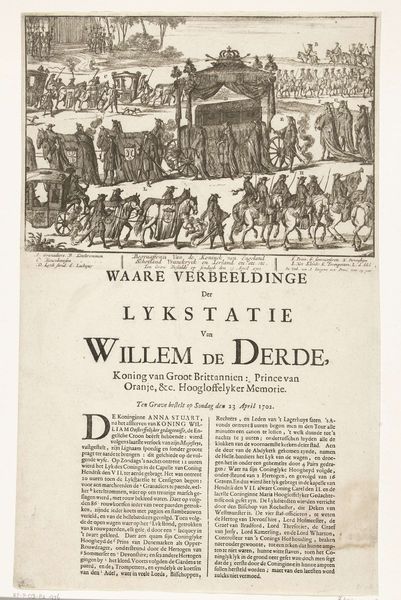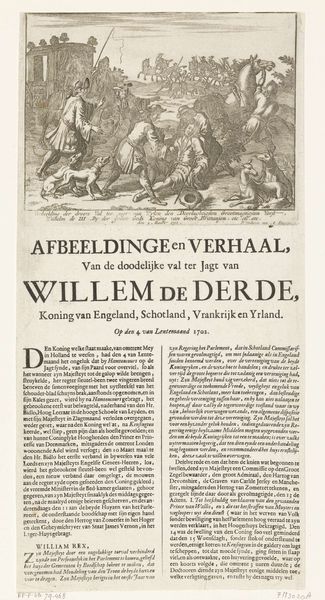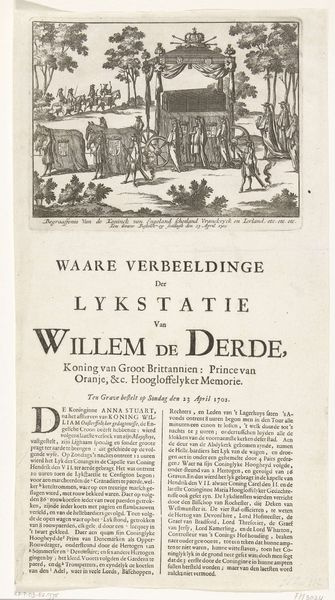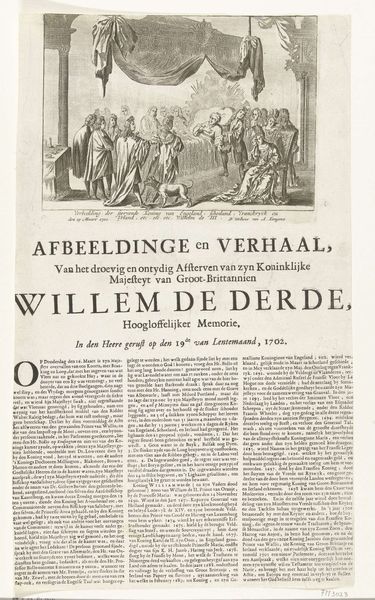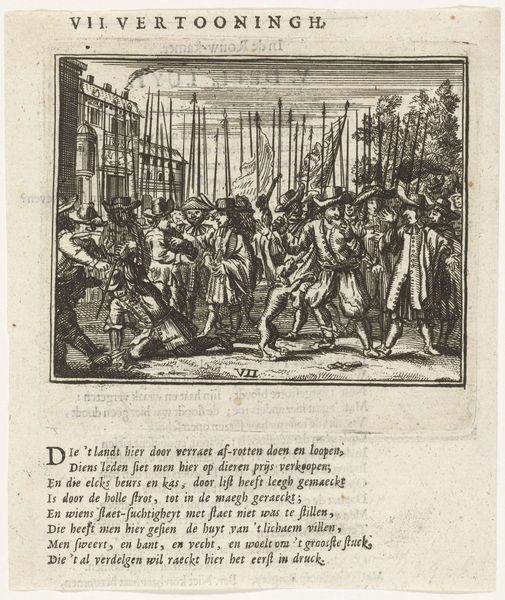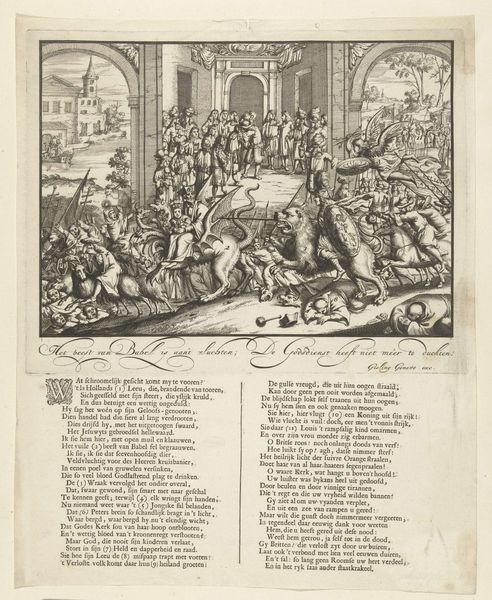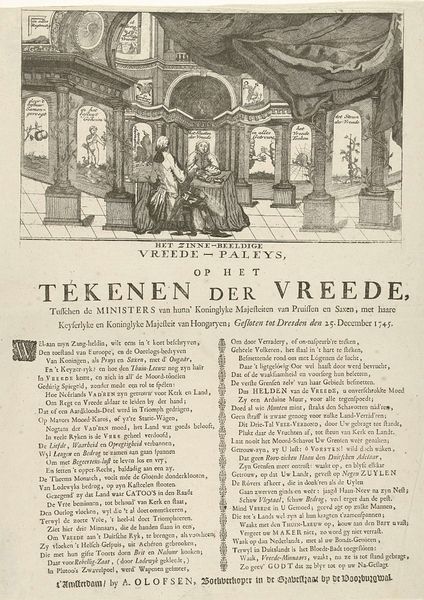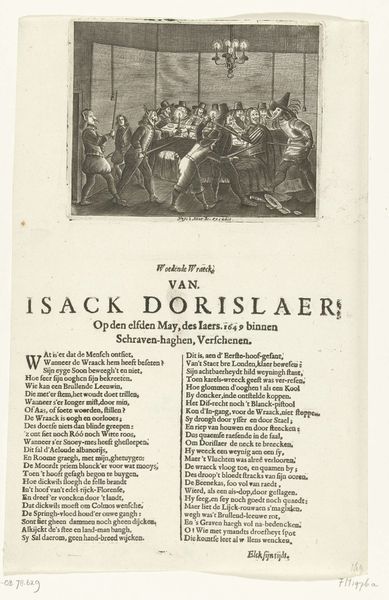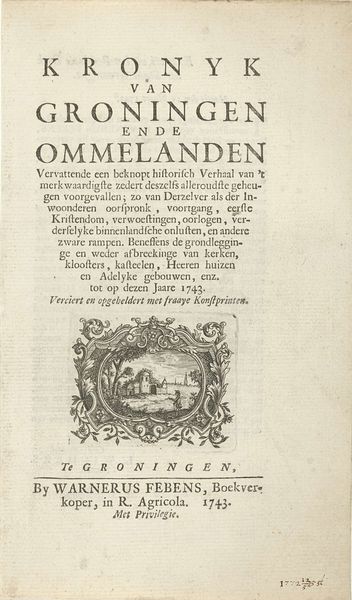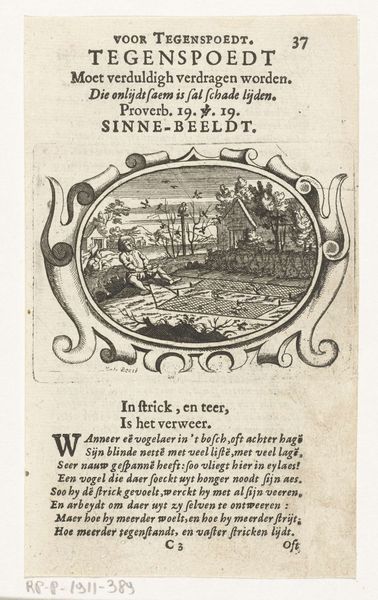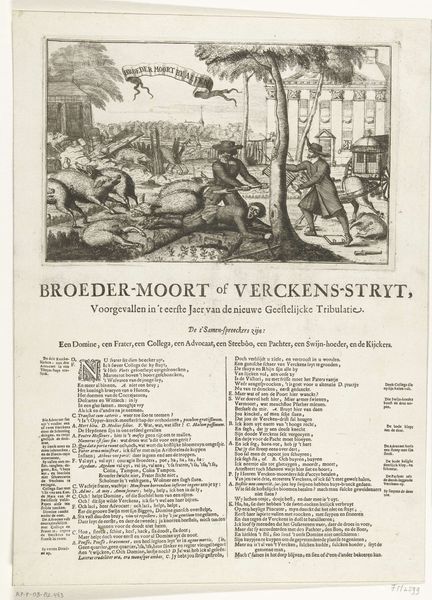
print, engraving
#
narrative-art
#
baroque
#
dutch-golden-age
# print
#
landscape
#
figuration
#
cityscape
#
history-painting
#
engraving
Dimensions: height 388 mm, width 216 mm
Copyright: Rijks Museum: Open Domain
Curator: Here we have an engraving from 1691 titled "The Entrance of King William III into The Hague." Editor: Oh, this print really captures a bustling city scene! I'm immediately struck by the celebratory feel, despite the dense crowds rendered in such fine lines. There’s an impressive architectural backdrop too; it feels quite grand and momentous. Curator: It's the work of I. Baant, published in Amsterdam, depicting William of Orange's arrival in The Hague. As Stadtholder and future King of England, his presence was of major significance. The print itself functions almost as a public record of the event. Editor: Looking closer, I see a tension between the architectural and the human elements. The imposing building looms in the background almost as a symbol of authority. The crowds in the foreground, though, are active participants, not just passive observers. Notice the textual inscription; what can you tell me about its language? Curator: That's an interesting observation about the building's imposing nature, especially juxtaposed with the crowds! As for the text, it contains a poem spoken from the point of view of The Hague itself, personifying the city as a welcoming entity extending hospitality and promising loyalty to William. Editor: A fascinating symbolic gesture! The Hague literally 'speaks' its devotion. One wonders, however, about the underlying cultural need for such public displays of allegiance. Are there elements of apprehension as well as acclaim? Curator: It is definitely a complex tableau. Beyond the pageantry, prints like these played a role in shaping public opinion and reinforcing the authority of the House of Orange. The act of printing and distributing such images made it part of a wider political landscape. Editor: So much is packed into this small image. From a cultural perspective, it underscores how closely interwoven urban identity and political power were at that time. Even a relatively straightforward historical representation conveys so much. Curator: Indeed. It's a valuable window into understanding the public role of art and how the powerful used imagery. Editor: I'm glad we paused to unpack this engraving! There’s far more than first meets the eye; symbols offer powerful insights into historical events.
Comments
No comments
Be the first to comment and join the conversation on the ultimate creative platform.
